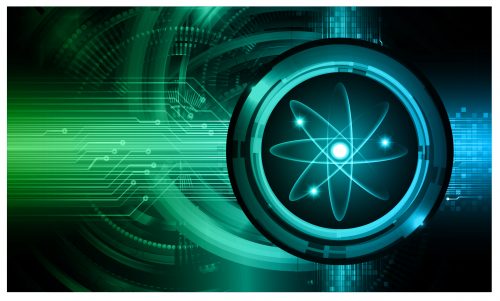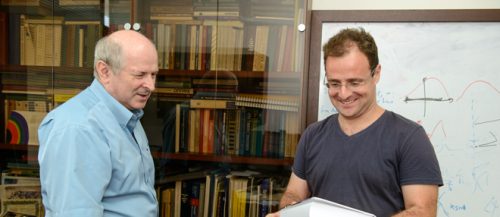Every body moving in space - a sphere, a molecule, a galaxy, etc. - has a linear velocity, expressed in its movement from place to place in space, as well as an angular velocity expressing its rotation around some axis. A few years ago, the hypothesis was put forward that it is possible to influence the speed and direction of rotation of a cluster of molecules by means of very short pulses of laser rays

Every body moving in space - a sphere, a molecule, a galaxy, etc. - has a linear velocity, expressed in its movement from place to place in space, as well as an angular velocity expressing its rotation around some axis. A few years ago, the hypothesis was put forward that it is possible to influence the speed and direction of rotation of a cluster of molecules by means of very short pulses of laser beams. For example, laser flashes that are as long as the time span of the rotation of the molecules on their axis (a few tens of trillionths of a second) may accelerate the rotation of the molecules just like a kind of optical centrifuge acting on individual molecules.
Prof. Ilya Aberbuch, from the Department of Chemical Physics at the Weizmann Institute of Science, asked what would happen if we allowed such a centrifugal flash to hit a mass of molecules moving in the air. In such a case, says Prof. Aberbuch, the laser flash will cause the molecules to rotate in the direction of the polarization of the light - at a much higher speed compared to the speed of their movement in space. In other words, the light will cause the molecules to spin like little gyroscopes, as if they were super-gyro. The enormous speed of rotation in the direction of polarization will cause the accumulation of molecules to take the shape of a pancake (chamita) in the plane perpendicular to the direction of the light's progress.
Prof. Aberbuch, together with his research colleagues Dr. Yuri Khodorkovsky and Dr. Uri Steinitz from the institute, and with Prof. Jean-Michel Hartman from France, sought to understand the behavior of the hamita-like superspindles, a special molecular state that was almost never studied before . To study the dynamics of a cluster of molecules, such as nitrogen or oxygen, when they "encounter" a short laser flash, the researchers used dynamic computer simulations, and with their help sought to understand the mechanism of the exchange of angular energy with linear energy, a process that results from the random collisions between them.

As we know, this state, when all molecules behave as super-ambients, cannot last forever, since nature always strives to reach, eventually, a state of equilibrium. The "law of equal distribution" teaches us that in thermal equilibrium the energy is distributed equally between all its forms, and in this case - between the angular velocity, which causes the rotational movement, and the linear velocity, which is related to the linear movement in space.
If so, in a state of equilibrium, the molecules will no longer behave as pancake-shaped supersphericals, since - as a result of an equal division with the linear velocity - their angular velocity will decrease significantly, and the direction of rotation will become random. On the other hand, the linear speed of the molecules will increase, so that the gas pool will heat up. However, the scientists discovered that despite the random collisions between the superspins, the quasi-gyroscopic motion of the molecules (in which the average angular velocity remains constant) is nevertheless maintained for a longer time than expected, and even survives many collisions between the molecules. It became clear to the scientists that the collision of one super-spindle with another super-spindle almost does not affect its angular velocity, and that at a certain point a kind of "chain reaction" takes place, after which the angular velocity fades, while a significant part of the energy goes to the linear orbit. During this "explosion time" energy is released quickly, and the scientists explain that this is caused by collisions that occur between few molecules that rotate at a relatively low speed and other spinners that move at a relatively high linear speed. These collisions cause an "efficient" transfer of energy between the angular velocity and the linear velocity, and at this point a feedback process begins which manifests itself in "stealing" additional angular velocity, at an increasing rate, in favor of the linear one. The result: the number of superspins is very quickly reduced, and the molecules return to their normal speed and direction.
Following the theoretical work of the institute's scientists, several groups around the world are now trying to demonstrate the phenomenon in the laboratory. In fact, preliminary results verifying this theoretical prediction have already been demonstrated. The existence of superspindles in a molecular gas for a relatively long time, and control over the optical properties of the gas, may promote applications such as a waveguide in the atmosphere, something that may be used to transmit energy over long distances, and possibly even to transmit information.
Tags:
Ilya Aberbuch chemical physics

One response
Here is an article in physics. You can delete the request for an article in physics in an article about depressurization.